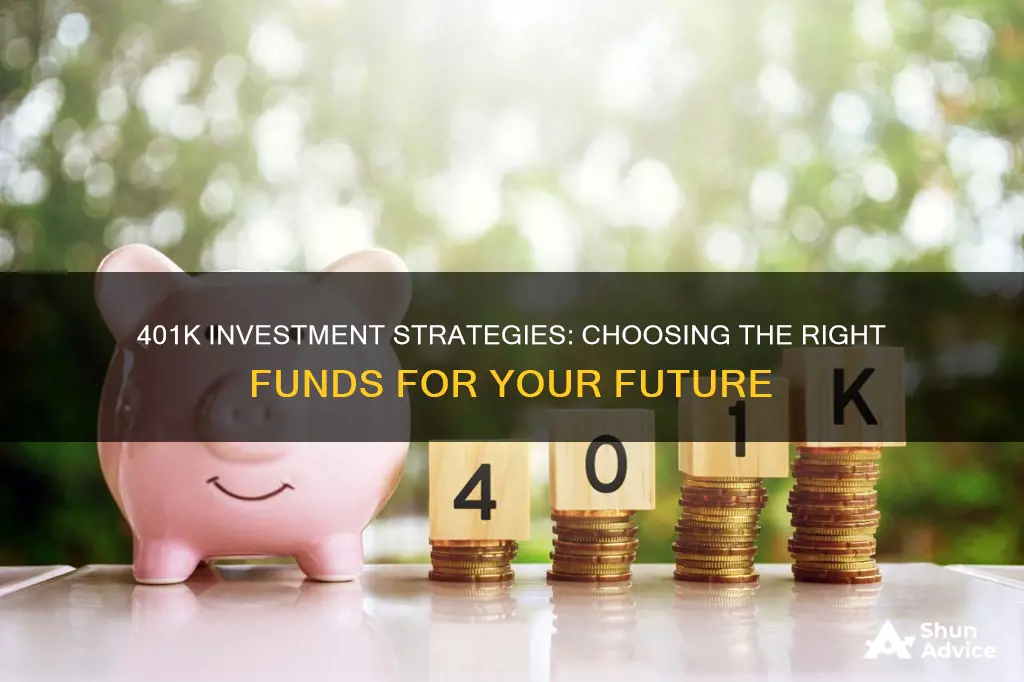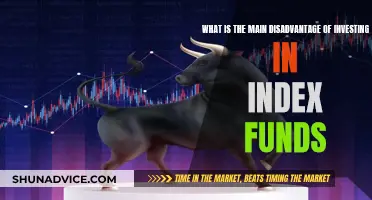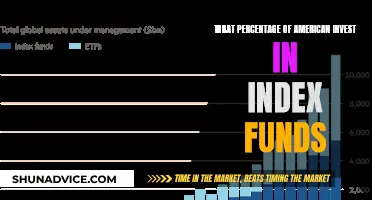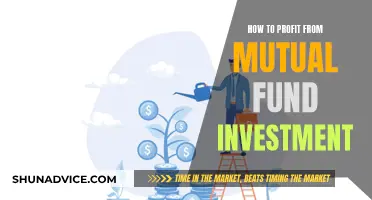
Choosing where to invest your 401(k) can be a tricky task. There are a few key things to keep in mind when making your decision. Firstly, consider the fees and long-term returns of the fund. While a fund with high fees may sometimes deliver better returns, passive funds with low fees can often be a better choice, as fewer than 13% of US mutual funds outperform the S&P 500 over a decade. You should also consider your risk tolerance, age, and how much you'll need to retire. Younger investors with a longer time horizon can afford to take on more risk and invest in more aggressive funds, whereas older investors should opt for more conservative funds to protect their accumulated earnings. It's also important to diversify your investments to mitigate risk and ensure you don't put all your eggs in one basket. Finally, make sure to monitor the performance of your chosen fund and rebalance your portfolio when necessary.
What You'll Learn

Target-date funds
The way it works is simple: you pick a fund with a target retirement year that is closest to when you plan to retire. A team of professionals will then manage the fund and invest in a globally diversified mix of stocks, bonds, and other investments. They will adjust the mix of stocks and bonds as you go through your career to help you stay on track.
For example, if you want to retire in 2039 when you turn 65, you might consider the 2040 fund. The fund, which is best for investors retiring in less than 10 years, will hold a diversified portfolio, shifting the mix of stocks, bonds, and other assets over time and even after you retire. At the last report, Vanguard's 2030 fund held 62% in stocks, 36% in bonds, and the rest in cash.
While target-date funds aim to reduce risk over time, they are not risk-free, even when the target date has been reached. They do not provide guaranteed income in retirement and can lose money if the stocks and bonds owned by the fund drop in value. It's important to monitor the fund's performance and assess whether its investments continue to meet your needs and risk tolerance over time.
Understanding Opportunity Zone Fund Investment Requirements
You may want to see also

S&P 500 index funds
Performance and Risk
The S&P 500 is widely considered a good barometer for the performance of the U.S. stock market as a whole. Historically, it has returned an average of about 10% annually over the long term. While past performance is not a guarantee of future results, the S&P 500 has a long track record of solid returns.
The S&P 500 tends to be slightly less volatile than a total market index fund that includes small- and mid-cap companies. The selection process for the S&P 500, managed by a committee of experts, results in a more refined index that excludes smaller, less liquid, or unviable companies.
Fees and Expenses
Index funds are passively managed, and S&P 500 index funds have some of the lowest expense ratios in the market. The expense ratio represents the annual fee charged by the fund manager, and for S&P 500 index funds, it is often less than 0.10%. This means you pay only $10 per year for every $10,000 invested.
Additionally, when investing in mutual funds, it is important to look out for sales loads or sales commissions charged by fund managers. ETFs do not charge sales loads, but some mutual funds might, so it is crucial to check for these extra expenses.
Buying and Holding
When buying an S&P 500 index fund, you can either set up your account to purchase the fund on autopilot or manually enter your trades. Here are the steps to buying an S&P 500 index fund:
- Find your S&P 500 index fund: Compare funds based on their expense ratios and sales loads. Select the fund with the lowest costs, as all S&P 500 index funds will have the same underlying stocks.
- Go to your investing account or open a new one: Access your existing 401(k), IRA, or brokerage account, or open a new one if you don't have one already. Choose a broker that offers the type of investment (mutual fund or ETF) you plan to buy and look for low or no transaction fees.
- Determine how much you can afford to invest: Figure out how much you can regularly contribute to your investments and set up transfers from your bank account or paycheck.
- Buy the index fund: Go to your broker's website and place your trade by entering the fund's ticker symbol and the number of shares you want to buy. You can also set up a recurring investment schedule to take advantage of dollar-cost averaging.
Index Funds: Why Don't More People Invest?
You may want to see also

Small-cap funds
Traits of Small-Cap Funds
Performance and Volatility
While individual small-cap stocks can be highly volatile, a fund composed of small-cap stocks can provide diversification and reduce overall risk. Historically, small-cap funds have outperformed large-cap funds over extended periods. However, in recent years, large-cap stocks have outperformed small-cap stocks, with tech giants like Nvidia, Microsoft, and Apple driving significant returns.
Advantages of Small-Cap Funds in a 401(k)
Considerations for Investing in Small-Cap Funds
When considering small-cap funds for your 401(k), it's important to assess your risk tolerance and investment goals. Small-cap funds are generally more suitable for investors with a higher risk tolerance and a longer time horizon. Additionally, expense ratios, or the fees associated with the fund, should be considered. Small-cap funds tend to have higher expense ratios due to the increased analysis required to identify and invest in suitable stocks.
In conclusion, small-cap funds can be a valuable component of a well-diversified 401(k) portfolio, especially for younger investors seeking growth potential. However, it's important to balance these funds with more stable options and consider the associated risks and fees before investing.
Arbitrage Funds: Strategic Investment Opportunities for Savvy Investors
You may want to see also

Bond funds
There are two main types of bond funds: broad market bond funds, which invest in short- and long-term bonds from a variety of issuers, and narrow market bond funds, which focus on a specific slice of the bond market, such as a short-term Treasury fund or a corporate high-yield fund.
Professional Management
Professional portfolio managers and analysts have the expertise and technology to research the creditworthiness of bond issuers and analyze market information before making investment decisions. This can help investors avoid the complicated and opaque process of building a diversified portfolio of individual bonds.
Liquidity and Convenience
Regular Monthly Income
Most bond funds pay regular monthly income, although the amount may vary with market conditions. This feature can make bond funds attractive to investors who desire stable, regular income.
Potential for Tax-Free Income
Municipal bond funds can help investors reduce their tax burden. Although municipal bond yields are generally lower, investors in higher tax brackets may find that the after-tax yield is higher than that of a taxable bond fund.
IShares iBonds Dec 2026 Term Corp. ETF (IBDR)
This fund combines the diversification of a bond fund with the certainty of investing in individual bonds. It invests only in bonds with maturities between January 1, 2026, and December 15, 2026, and pays a 3.7% trailing 12-month yield through monthly distributions.
Fidelity Capital & Income Fund (FAGIX)
FAGIX aims to provide both capital appreciation and income by adding equities to a predominantly corporate bond portfolio. It has a high-risk profile but has generated above-average returns, with a 5.3% trailing 12-month yield.
Dodge & Cox Global Bond Fund (DODLX)
DODLX is a top-rated fund by Morningstar, thanks to its patient and disciplined approach, strong leadership, and attractive fees. It emphasizes corporate debt, which tends to lead to higher returns, and has consistently outperformed its peers since 2016.
Kensington Managed Income Fund (KAMIX)
KAMIX employs a unique investment strategy that allows fund managers to adjust their approach based on market conditions. During positive markets, they lean towards higher-yielding bonds, while in negative or volatile markets, they shift towards Treasurys and cash equivalents. This strategy has helped the fund outperform a typical buy-and-hold strategy over the long term.
Sierra Tactical Bond Fund (STBNX)
STBNX takes a tactical approach to bond investing by combining riskier high-yield corporate bonds with stable U.S. Treasurys to provide total return while minimizing downside risk. The fund has delivered on its promise, avoiding two-thirds of the category index's declines and providing a nearly 5% trailing 12-month yield.
When considering bond funds for your 401(k), it is important to remember that investment choices should match your preferred time horizon and become more conservative as you approach retirement. Additionally, it is crucial to be aware of all expenses, such as operating costs, sales charges, redemption fees, and account fees, before investing.
Mutual Fund Tax Strategies: Secrets to Tax-Free Investing
You may want to see also

Actively managed funds
In its regulation on when plan fiduciaries can avoid liability for participant investment decisions, the Department of Labor (DOL) explains that fiduciaries intending coverage should offer a set of investment alternatives that, in aggregate, enable participants to "construct a portfolio with risk and return characteristics appropriate to their circumstances." For this reason, plan fiduciaries feel obligated to present a broad range of investment alternatives to plan participants.
Including actively managed options gives participants greater choice. This can help build a portfolio that best reflects their individual circumstances, such as their degree of risk aversion, their desire to manage their own portfolio, or their closeness to retirement.
The portfolios of index and actively managed funds can vary substantially, and have different risk/return profiles. A participant may achieve higher long-term returns at lower risk by investing in a mix of index and actively managed funds.
Debt Funds in India: Worth the Investment Risk?
You may want to see also







